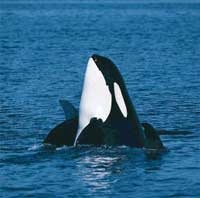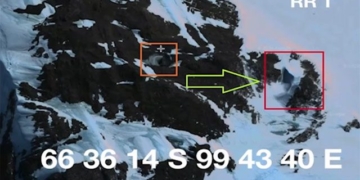In this scorching summer, you might be thinking of various ways to cool down. But have you ever wondered why we often see people feeding beluga whales ice cubes? This seemingly simple action hides a shocking truth!
Why Feed Beluga Whales Ice Cubes?
Beluga whales are giant marine mammals that inhabit the icy waters of the polar regions. To ensure beluga whales remain healthy and comfortable in artificial environments, many marine parks and aquariums have adopted a special feeding method – feeding ice cubes and frozen food. This method of feeding not only simulates their ocean environment but also provides beluga whales with psychological stimulation to maintain their physical and mental health.
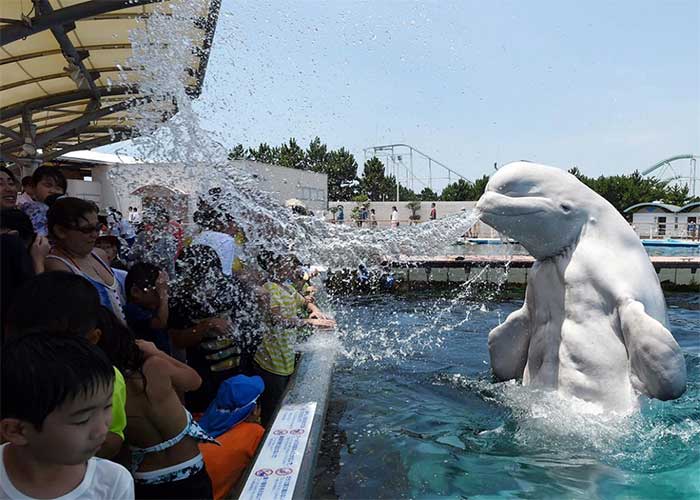
Zoos and aquariums are important places for humans to learn about and interact with wildlife. Among these efforts, the use of ice in feeding is gaining increased attention. Feeding with ice not only offers a new feeding method but also has a positive impact on animal behavior and health. (Image: CNN)
This method of feeding can simulate the free-living environment of beluga whales in the wild ocean. In nature, beluga whales often encounter ice of various shapes and sizes due to their habitat. By feeding belugas ice cubes in aquariums or marine parks, we can help them experience the “atmosphere” of their natural ocean and restore their natural living conditions as much as possible. Such environmental simulations can help beluga whales adapt better to artificial settings.
In the wild, beluga whales often chase ice and engage in activities that are crucial for their physical and mental health. However, in aquariums or marine parks, beluga whales often face limited space and monotonous environments.
Beluga whales can play among ice blocks, chase them, and leap out of the water to showcase their gracefulness. These activities not only increase the physical activity of beluga whales and improve their fitness but also stimulate their curiosity and desire to learn, enhancing their intelligence and adaptability.
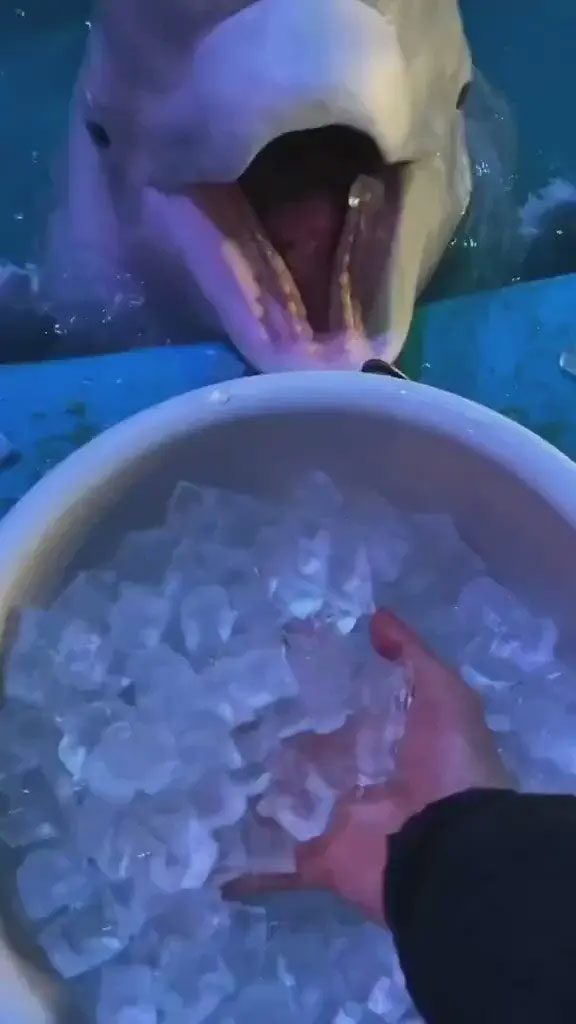
In the wild, animals often spend time foraging for food and testing various environmental conditions, such as freezing weather or icy waters. However, in captivity, animals often face overabundance and a lack of challenges. (Image: Zhihu).
When beluga whales see ice, they begin to consider how to use their abilities and skills to break or exploit it. This process of thinking and operation contributes to the intelligence of beluga whales, keeping them alert and energetic.
The method of feeding beluga whales ice cubes has been widely adopted in many marine parks and aquariums. By simulating the ocean environment and providing activities and psychological stimulation, feeding ice helps beluga whales adapt better to artificial environments and maintain their physical and mental health.

Food in ice can be a long-term way to absorb nutrients. Animals spend more time licking or chewing ice cubes compared to when they eat a large amount of food directly, allowing for better control over their food intake. This method helps prevent overeating, reducing the burden on the digestive system, and preventing obesity and related diseases. (Image: ZME)
The Effects of Ice on Beluga Whales
Beluga whales are mammals that primarily eat fish and other marine creatures. However, in the frigid oceans, beluga whales often face food scarcity. To tackle this issue, beluga whales often store their food in ice to keep it longer. The low temperature of the ice can slow down the decomposition of food, allowing beluga whales to enjoy their meals for a longer period and improving their survival capabilities.
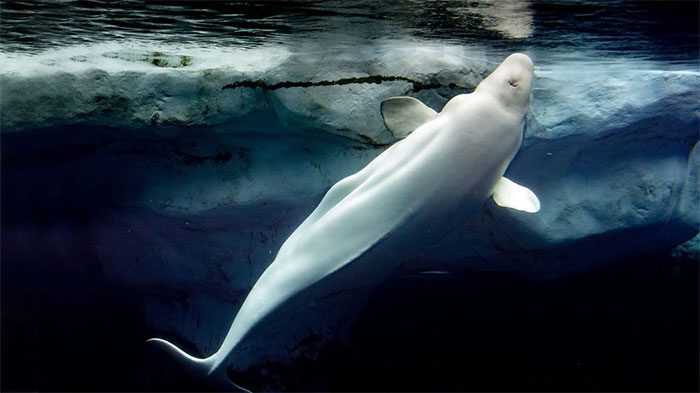
As a new and effective feeding method, feeding frozen food has been implemented in various zoos and aquariums with notable results. This method of feeding not only enhances animal welfare by promoting behavior and improving health but also fosters deeper interactions between the audience and the animals. (Image: Zhihu).
Beluga whales live in extremely cold ocean environments, with water temperatures lower than their body temperature. To maintain a normal body temperature, belugas need to continuously generate heat. As a heat exchange medium, ice can dissipate excess heat. Beluga whales will swim close to the ice and allow their bodies to come into contact with the ice to dissipate excess body heat and maintain temperature balance. This ability allows beluga whales to thrive in cold waters and adapt to environmental changes.
When engaging in underwater activities, the resistance of water exerts a certain load on the muscles of beluga whales, similar to how humans lift weights to train muscles in the gym. Ice creates greater resistance for beluga whales, requiring more strength to swim in contact with it. Such exercises can enhance the muscle strength of beluga whales and improve their survival capabilities.
Ice plays a crucial role for beluga whales. It not only delays food spoilage and extends food supply duration but also helps cool body temperature, allowing beluga whales to thrive in cold waters.
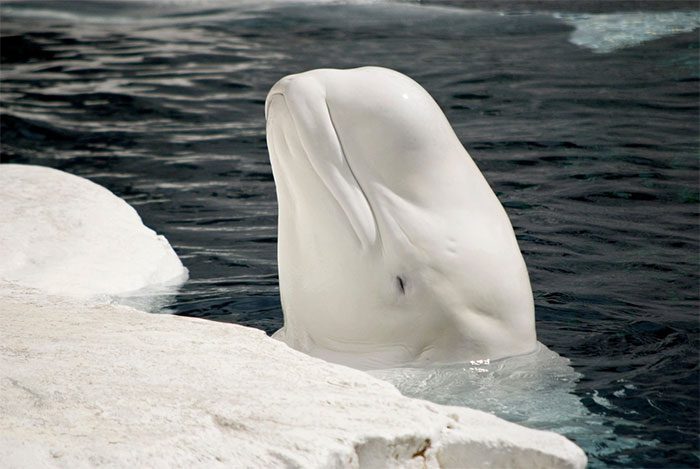
Ice plays a crucial role for beluga whales. (Illustration: ZME).
Ice can also provide opportunities for muscle training, increasing physical strength and resilience of belugas. These adaptations allow beluga whales to survive and reproduce in the ocean and continue to thrive in their homeland. We should cherish and protect these beautiful and magnificent creatures while working together to preserve the ecological balance of the ocean.









































